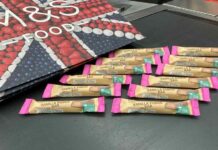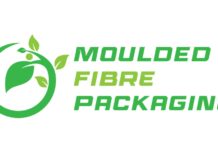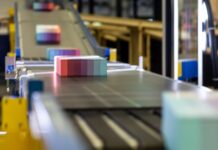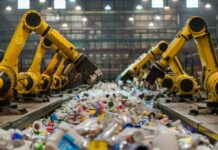As a result of the introduction of environmentally acceptable materials, the packaging business, which has been condemned for a long time for its dependence on plastics, is now seeing substantial innovation.
These newly developed materials, which are derived from algae, agave, and other renewable resources, have the potential to drastically lessen the negative effect that packaging has on the environment.
Using algae to revolutionize the packaging industry
There is a growing interest in using algae, which is one of the most ubiquitous creatures in the world, as a potential material for environmentally friendly packaging. As a result of its high growth rate and low resource needs, businesses are investigating the possibility of using algae as a commodity in the production of raw materials.
To differentiate itself from conventional plastics, packaging made from algae is both biodegradable and compostable, meaning that it decomposes naturally without leaving behind any toxic residues.
In order to convert algae into materials that may be used for packaging, researchers have devised a variety of ways. For the purpose of producing films and coatings, one method includes the extraction of alginate, which is a biopolymer that may be found in brown algae.
Because they are flexible, long-lasting, and possess good barrier qualities, these films are suited for use in the packaging of food products. Furthermore, algae may be turned into bio-plastics, which are a kind of plastic that mimics the qualities of traditional plastics but is far less harmful to the overall ecosystem.
Agave is a resource that was used as a by-product
Another cutting-edge substance that is gaining popularity is agave, which is a plant that has historically been used in the manufacturing of tequila. Agave fibers, which were more often seen as garbage, are now being recycled into environmentally friendly packaging alternatives.
The tequila business generates less waste as a result of this, and it also creates a new supply of material that can be broken down by biological processes.
Agave-based packaging is a feasible alternative to traditional plastics because of its strength and durability, which are both well-known characteristics of this material. In addition to being able to be processed into paper, cardboard, and bio-plastic composites, the fibers may also be treated into other forms.
The fact that these materials are not only biodegradable but also compostable makes them a valuable contributor to a circular economy, which is characterized by the effective reuse of resources and the reduction of waste.
Other environmentally friendly technologies, in addition to algae and agave
Other new materials are also being developed to address the environmental effect of packaging, and although algae and agave are generating headlines, other materials are also being explored.
The mycelium of mushrooms, which is the root structure of fungus, is being used in the production of biodegradable packaging that is not only substantial but also compostable. The rapid growth of mycelium and its ability to be shaped into a wide variety of forms make it an excellent material for use in protective packaging systems.
Furthermore, polylactic acid (PLA), which is obtained from renewable resources such as maize starch or sugarcane, is an additional substance that shows promise. PLA is already being used in a variety of packaging applications, ranging from flatware to food containers at this very moment.
One of its benefits is that it may be composted in industrial facilities, which helps to lessen the load that these facilities have to carry.
In addition, seaweed-based packaging is increasing in popularity as a result of its widespread availability and the positive effects it has on the environment. The growth of seaweed is quick, it does not need any fertilizers, and it enables the sequestration of carbon dioxide.
Because of this, it is an excellent contender for environmentally friendly packaging solutions. Extracts of seaweed may be processed into films and coatings that have good barrier qualities, making them appropriate for use in a broad variety of packaging applications.
Challenges and opportunities for the future
In spite of the fact that these cutting-edge materials carry a great deal of potential, they also confront a number of obstacles. Scalability is one of the most significant challenges. The production of environmentally friendly materials for packaging at a scale enough to compete with conventional plastics continues to be a serious challenge.
The fact that these environmentally friendly alternatives now have a higher manufacturing cost is another factor that may act as a barrier to their wider acceptance.
On the other hand, it is anticipated that these difficulties will become less significant as technological advancements and the demand for environmentally friendly packaging continue to develop. It is essential to make investments in research and development in order to increase efficiency in manufacturing processes and decrease expenses.
In addition, the knowledge and desire of consumers for environmentally friendly goods are projected to be the driving force behind market expansion, which will encourage more businesses to implement sustainable packaging solutions.
In addition, governments and regulatory authorities do a significant amount of work to encourage the use of environmentally friendly products. Accelerating the shift away from conventional plastics may be accomplished via the implementation of policies and incentives that encourage the development and use of environmentally friendly packaging.
The implementation of requirements for biodegradable alternatives and bans on single-use plastics is already taking place in a number of places, which will serve as a model for the future.
The lesson to be learned
The move toward environmentally friendly materials for packaging is not only a passing fad; rather, it represents a development that is essential in light of the issues that the environment is facing.
In addition to being viable alternatives to conventional plastics, new materials like algae and agave also hold the promise of lowering pollution levels and fostering the development of a circular economy.
Despite the fact that there remain obstacles to be conquered, the future of packaging seems to be more environmentally friendly with these sustainable advancements on the horizon.
Through the use of these innovative materials and the encouragement of more research and development, the packaging sector has the potential to drastically reduce the negative effect it has on the environment.
A wider drive toward sustainability is represented by the transition from algae to agave, which ushers in a new age of environmentally friendly packaging alternatives.




























